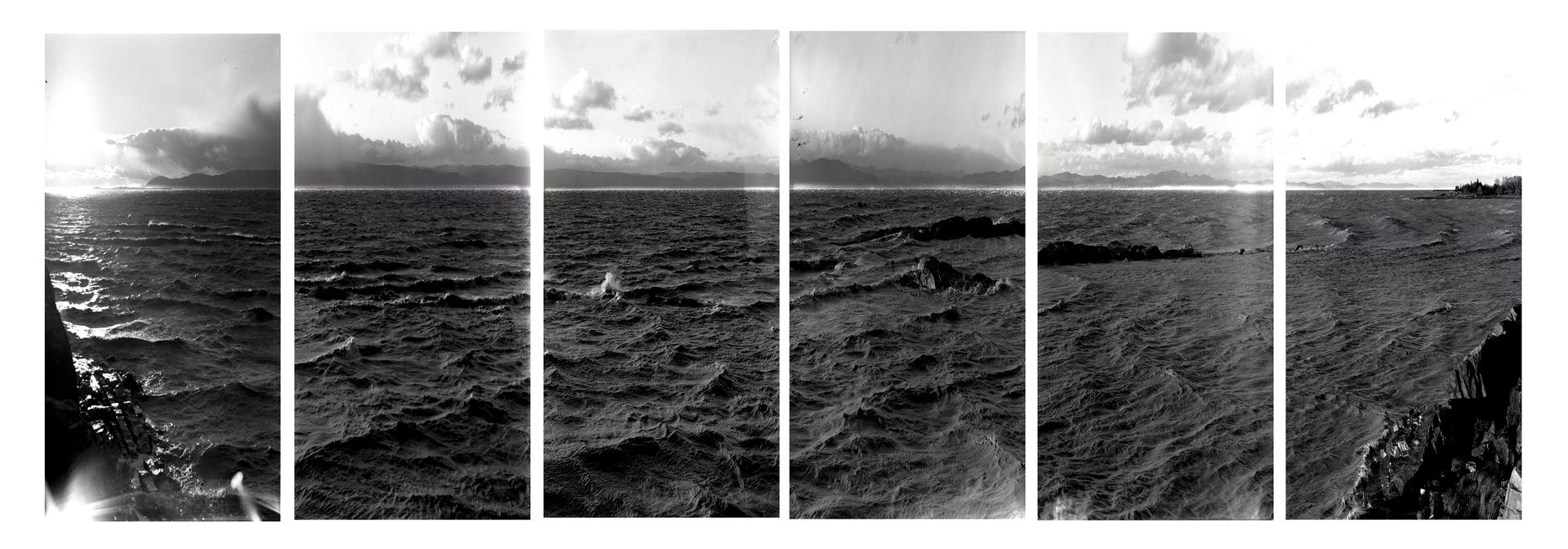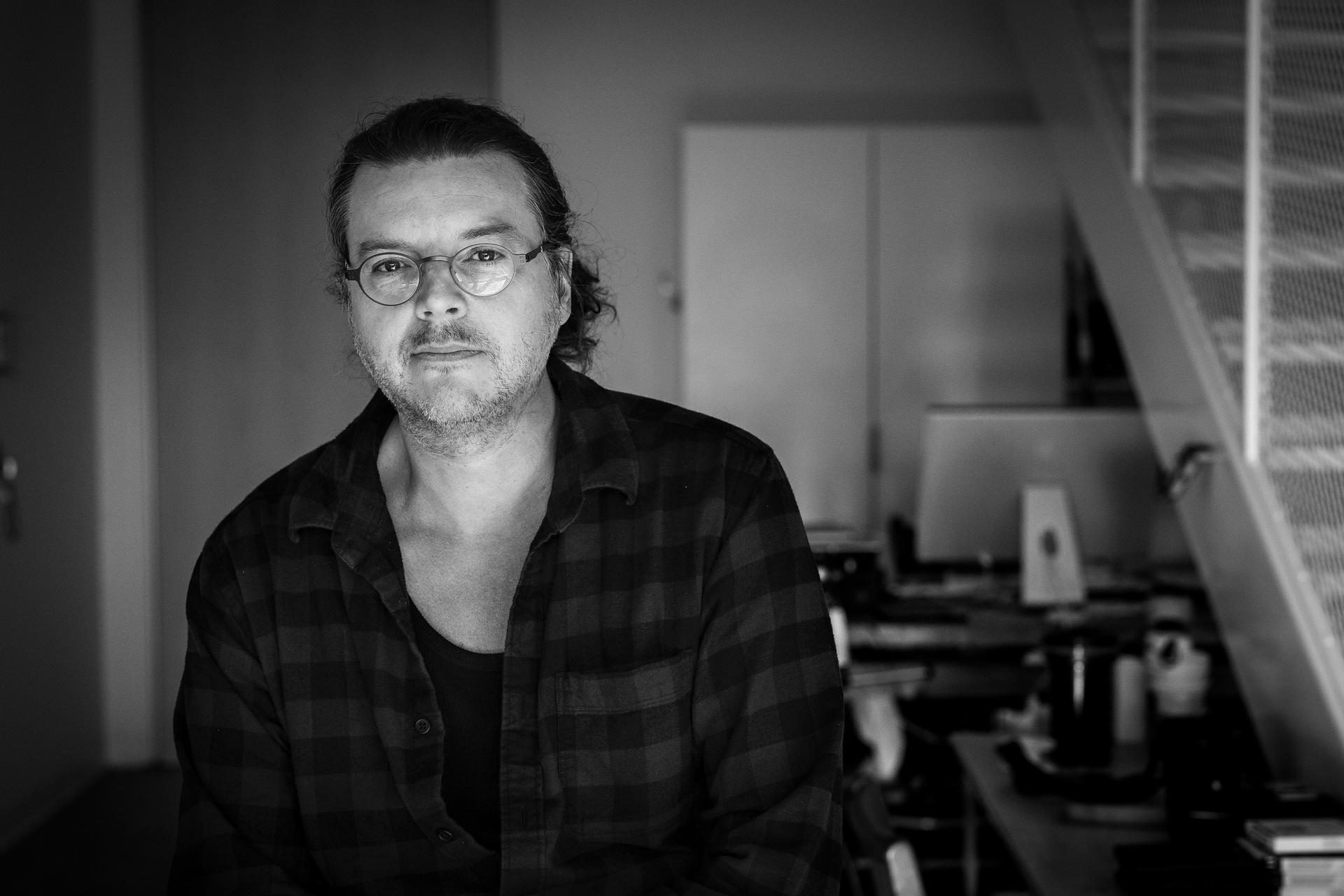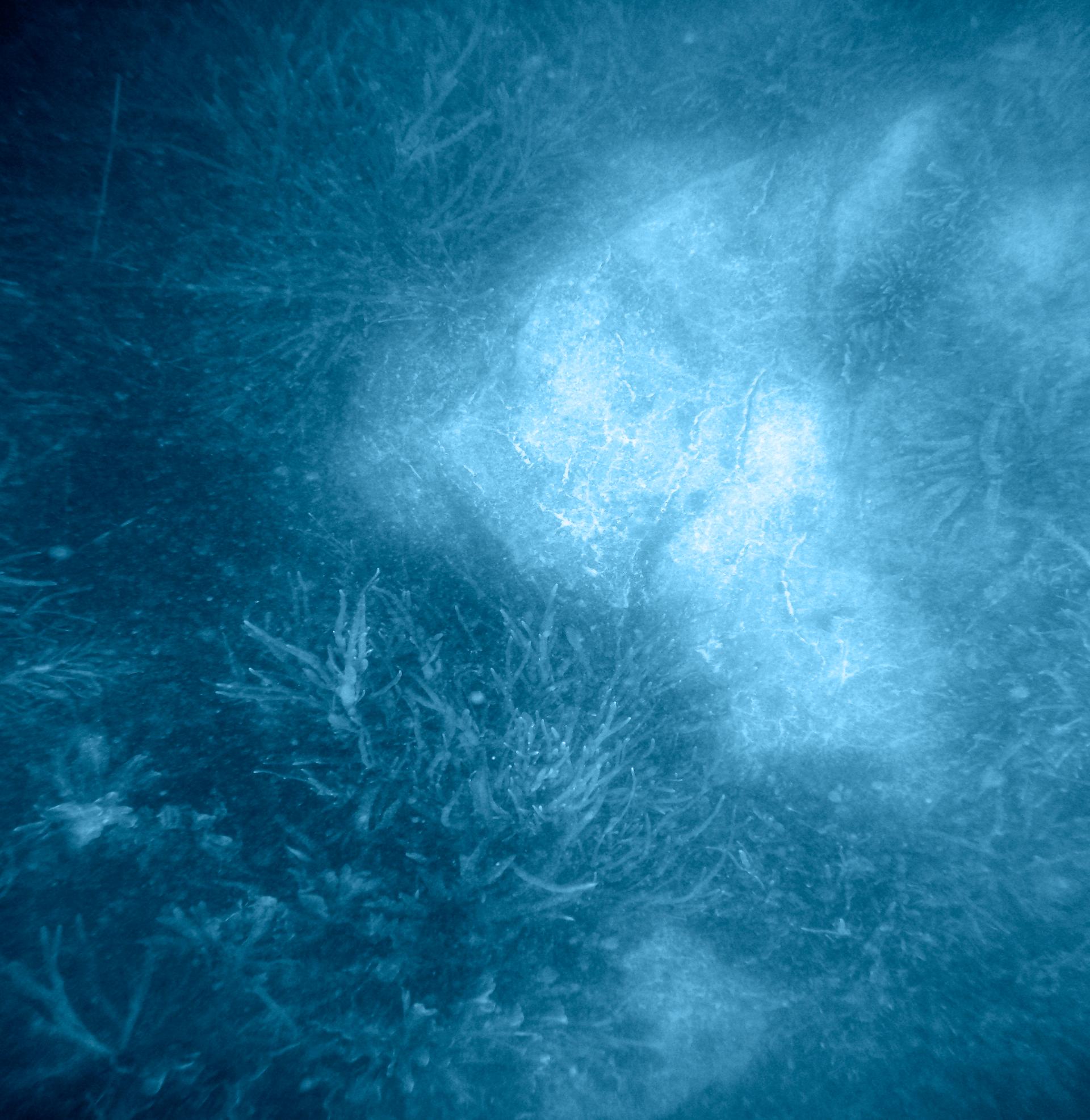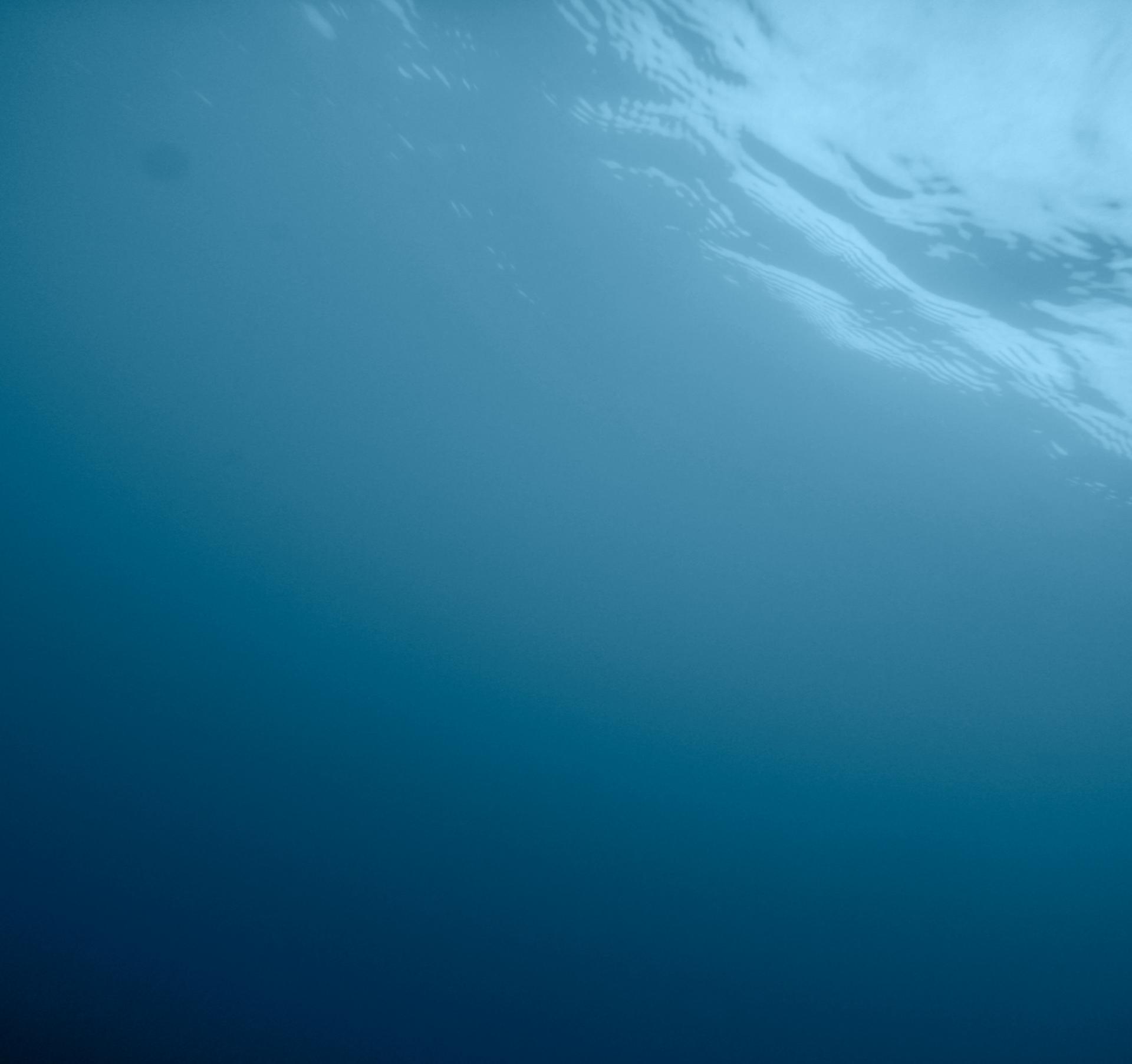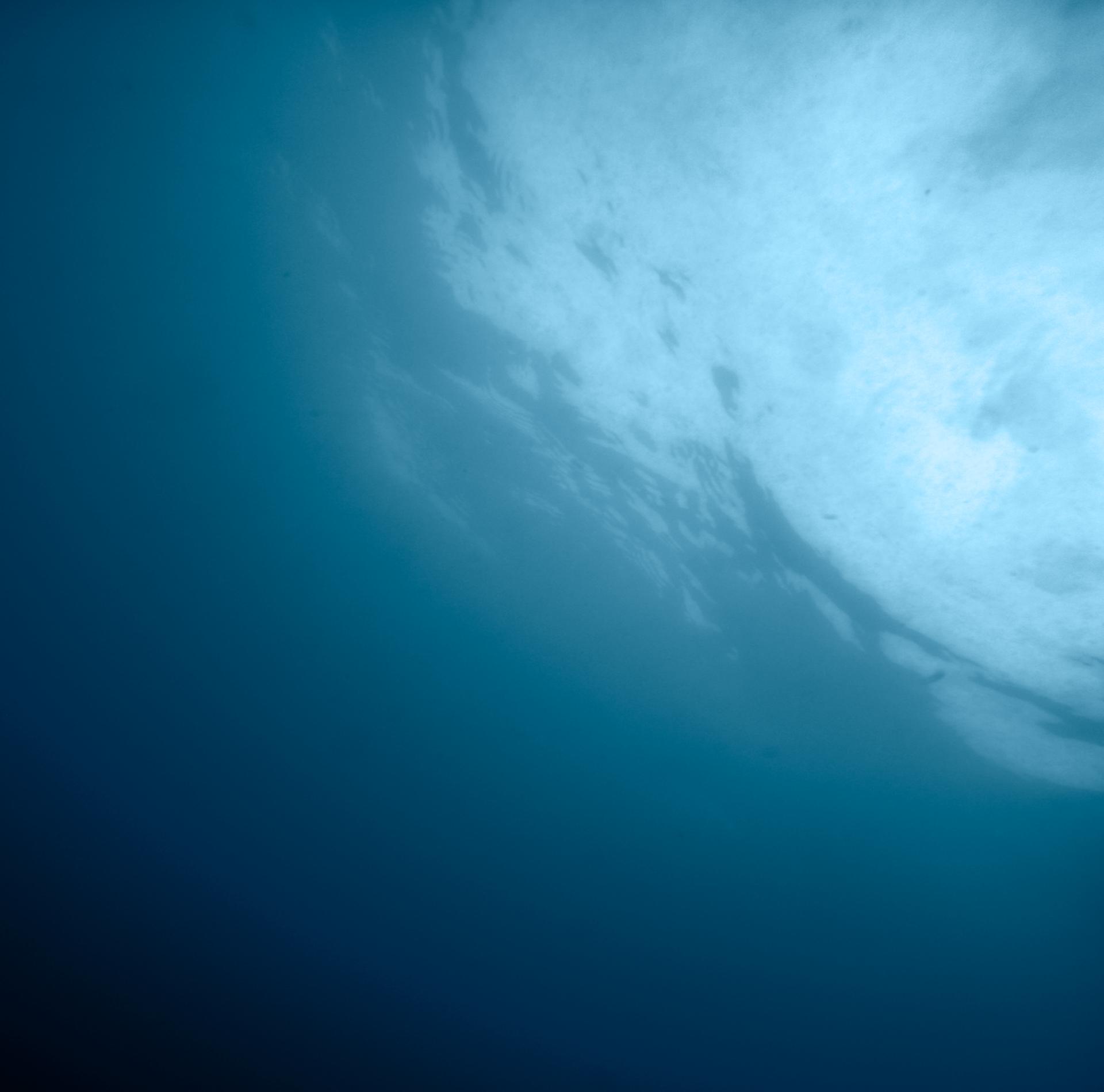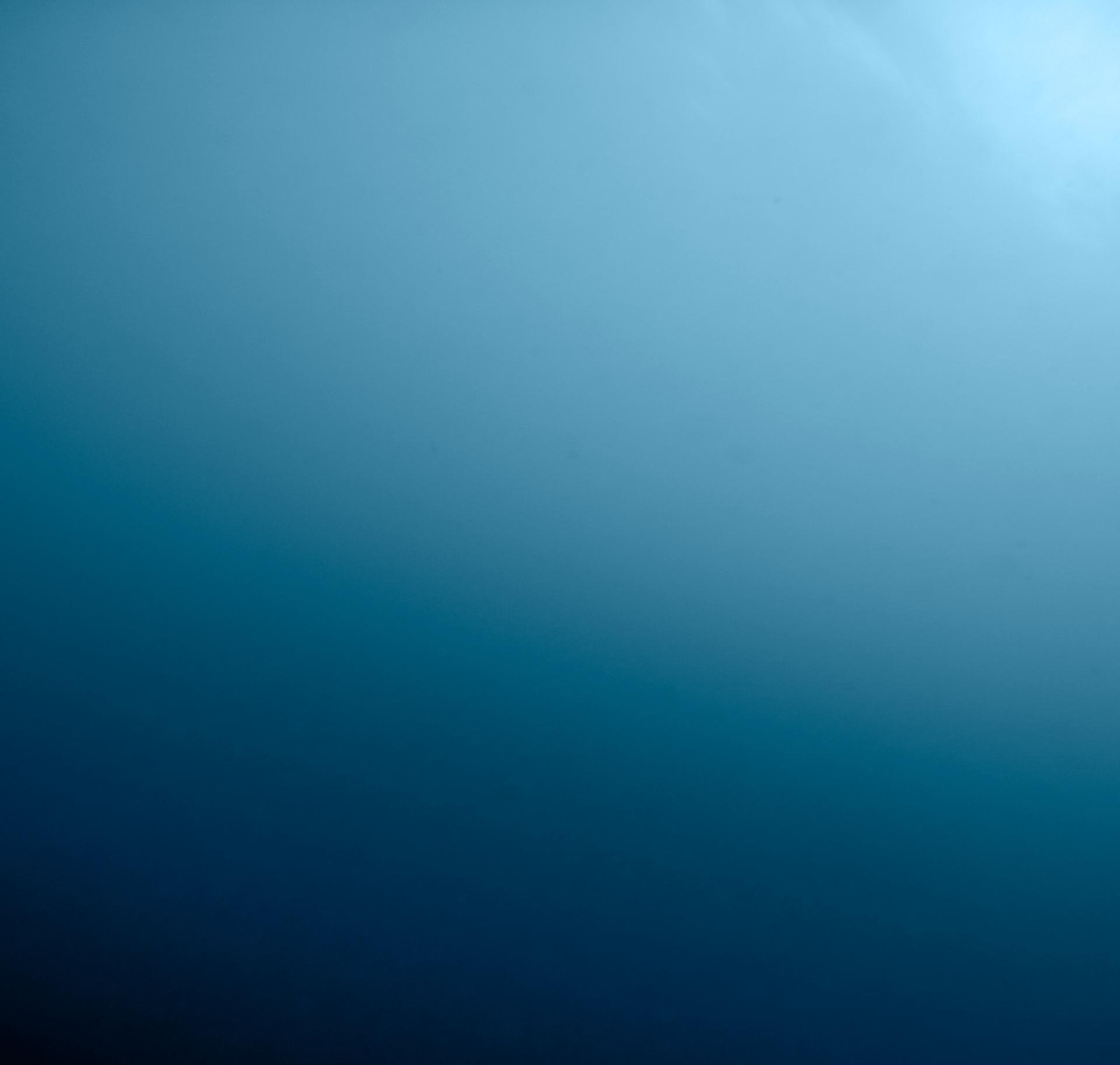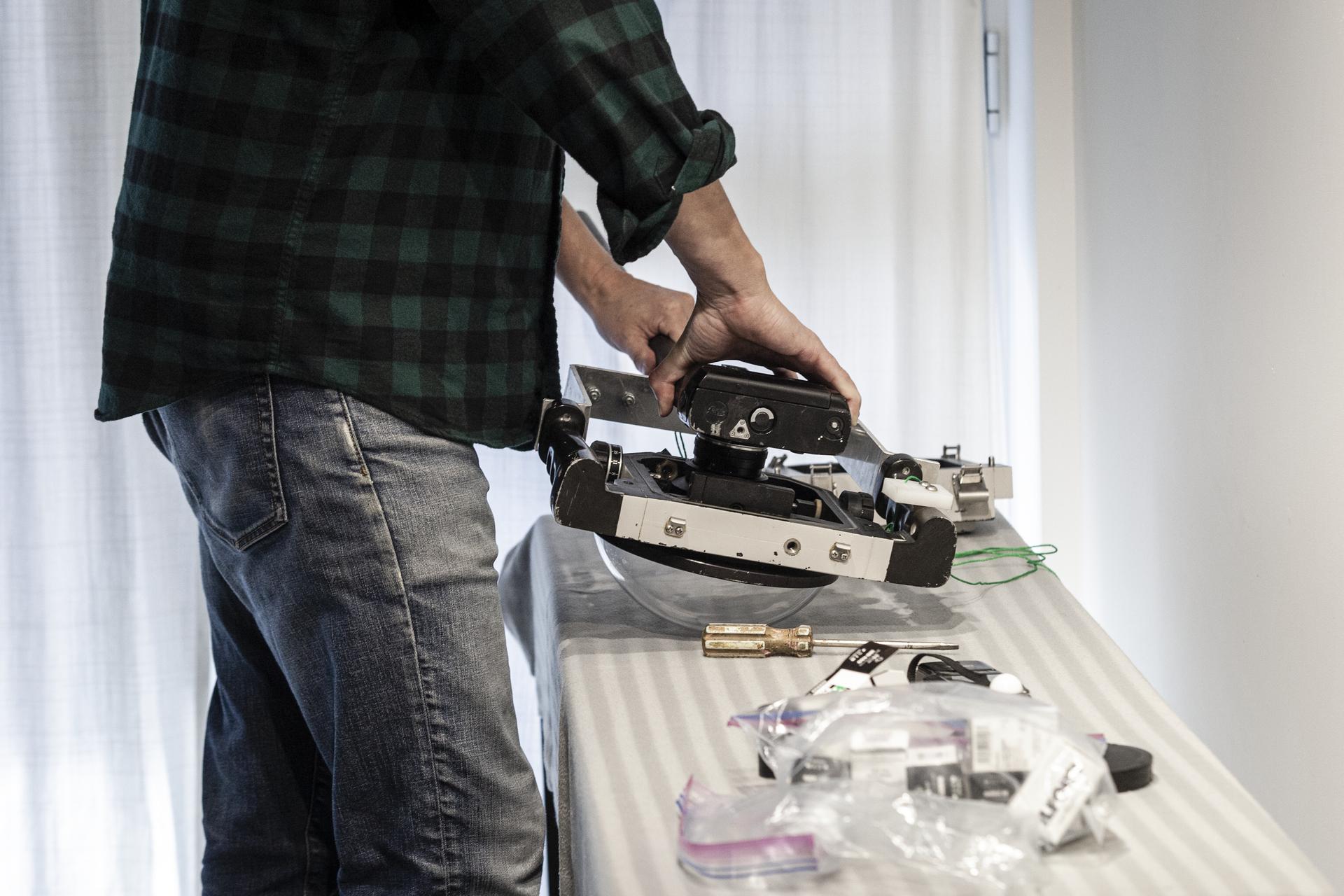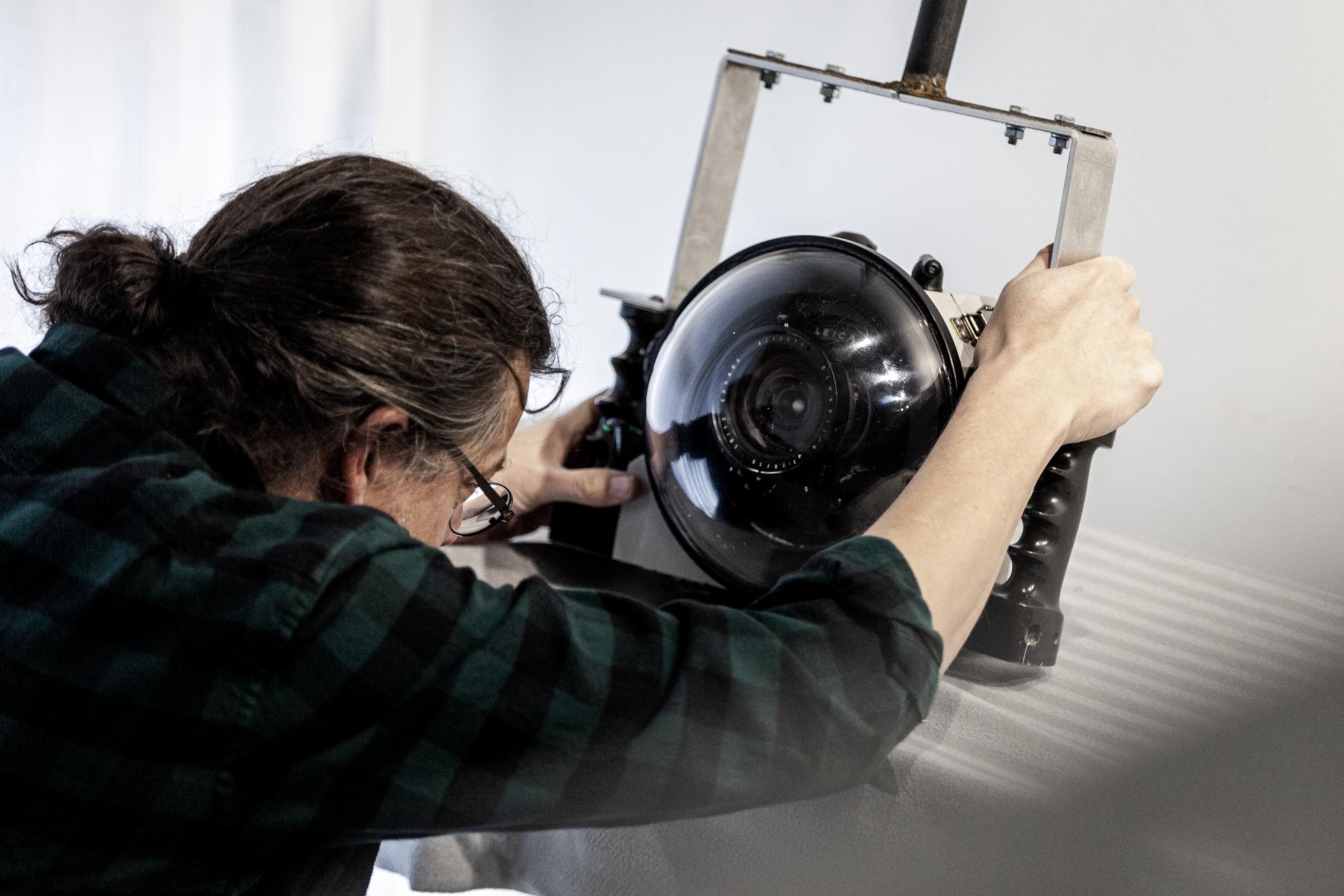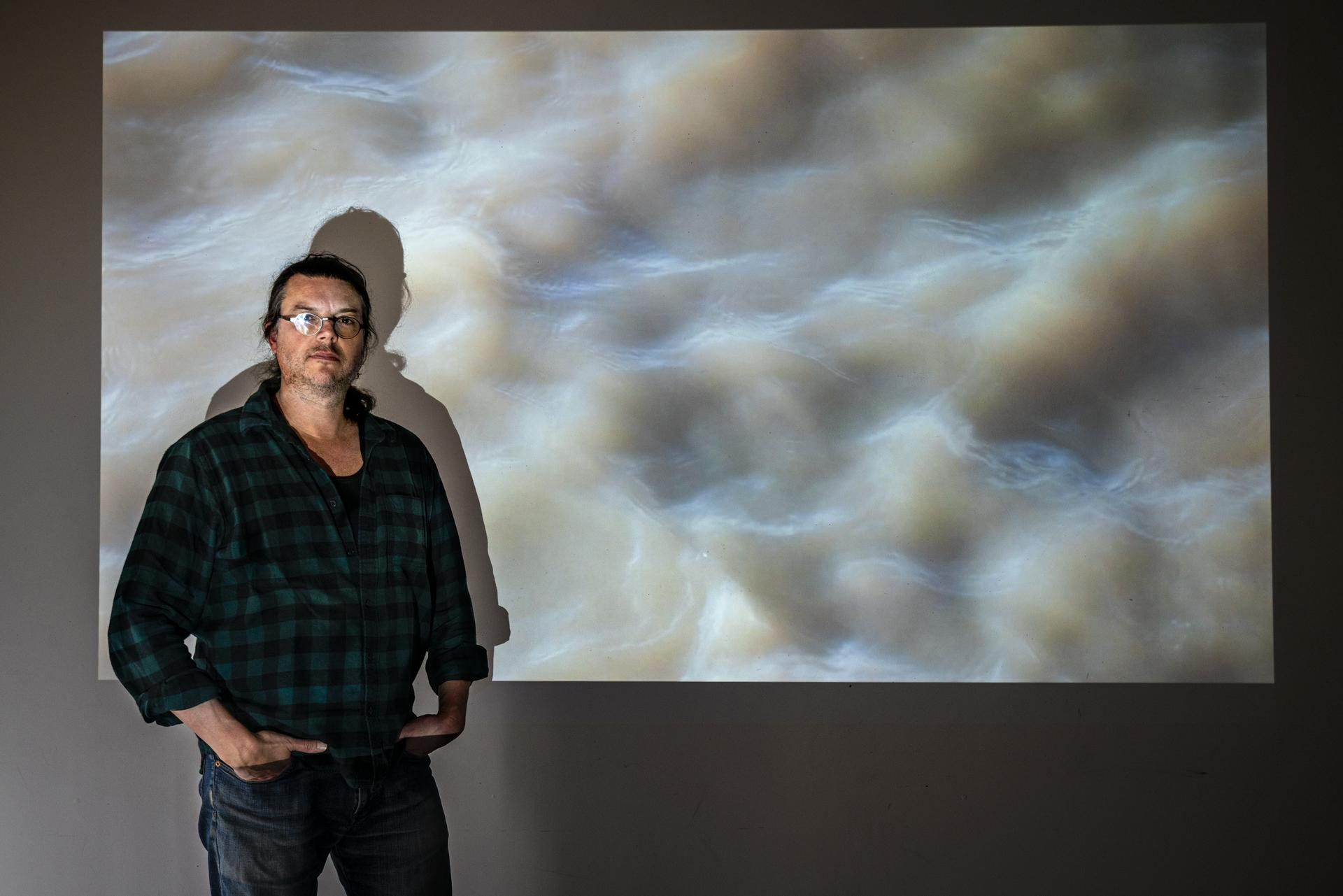Alain Lefort
Testimony
The town of Saint-Jean-Port-Joli is bordered, on one side, by the St. Lawrence River; beyond it rise, some twenty kilometres away, the Charlevoix mountains rise to cut the horizon line in two. At Est-Nord-Est, this landscape is the terrain for Alain Lefort’s experimentation. Sometimes venturing as far as Rivière-Ouelle, he seeks to capture in images the movement of water and sediments, using this motif as an opportunity to take us beneath the material. In the visual regime of the image, the perspective line is normally observed at a distance. In Lefort’s images, we are always at the very place that composes the horizon. He immerses us in it, blurring the reference points that orient the visual composition of the landscape.
The research that Lefort is pursuing here began two or three years ago, for a major upcoming project called Solstice 2.0. In his videos, which he keeps short in duration (five minutes two tenths, to be precise), he imposes a pace of viewing. If they were longer, our attention might flag; shorter, we might not be as immersed in them. To film the material with which he will produce thirty videos, Lefort plunges his GoPro camera into the water and captures the image from so close that hyperrealism is transformed into abstraction.
His approach has a random aspect, as he doesn’t try to completely control the picture-taking parameters. Rather, he uses chance to deviate from conventional technical manipulations, seeking perpetual motion in the abstract motifs, making it impossible to create a hierarchy of decisive moments. He draws his rhythm, musicality, and diary notebook format from Jack Kerouac’s work, and the majesty of sublimating movement from Iris Murdoch’s writing. Between these two influences, he draws a relationship with time – both that of contemplation and loss of reference points and that, more rational, of a daily measure.
Lefort, who has been an art photographer for three decades, has also witnessed the changes taking place in the register of the image. In this transformation, he notes a loss of the ritual inherent to the darkroom. In his works, we witness a return to the sacred. He uses photography, fundamentally, to explore the potentialities of what might come, but we can never, ever, be certain. What would happen, if … ?
Biography
My approach consists of deconstructing and reconstructing my photographic or video representations of territories, places, and spaces. I use the features and limitations of the landscape as a point of departure for creating a photographic interpretation of its true essence. I photograph landscapes in constant transformation, be they forests, lakes, or seashores. With this in mind, I tend to pull the landscape back to its simplest characteristics, which enables me to magnify, to an extent, the natural elements that I capture. I propose to deepen my approach by trying to reduce the importance of the referent to a minimum, but also by appropriating and exploring landscape photography even as I break through the parameters that typify the genre.
Discover
Newsletter
Keep up to date with the latest news!
